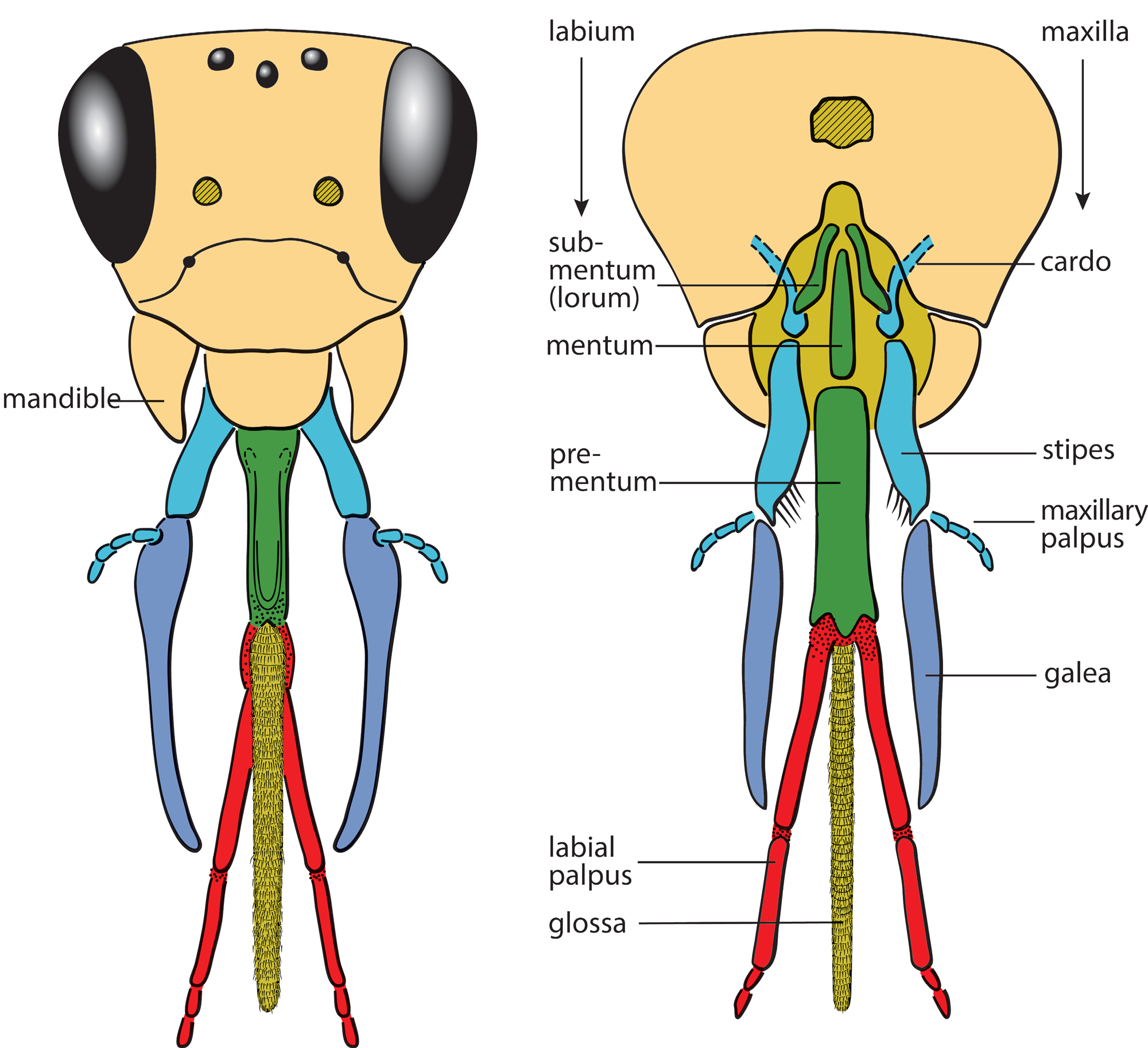Bee-Ology
Bee Life Cycle
Bees experience holometabolous development. This means that bee larvae look very different from adult bees, and transform through metamorphosis during the pupal stage. Bees pass through four stages of development: egg, larva, pupa, and adult.
The four stages of a bee’s lifecycle: egg, larva, pupa, and adult.
The length and events of a bee’s life vary, depending on the seasons they emerge, what flowers they gather food from, and whether they are solitary or social.
Solitary Bees
Diapause in a solitary bee’s lifecycle.
Most solitary bees have one generation of adults each year and are only active for a short period of time. They tend to emerge when their favorite plants are flowering. As a result, different species emerge at different times throughout the year.
Before becoming adults, most solitary bees go through a state of suspended animation called diapause. During diapause, bees are resistant to dry conditions and can conserve their energy for long periods. Some solitary bees can stay in this state for 10 years! Diapause allows solitary bees to wait for the right nest-building and foraging conditions. The offspring of these bees stay in the nest until the right conditions return.
Social Bees
Social bees produce multiple generations of adult bees each year and are active for many months. Social bees can have annual life cycles (new nests are founded each year) or perennial life cycles (nests persist over multiple years).
The life cycle of a social bee starts with a queen bee, who constructs a new nest in the early spring and cares for the first generation of workers until they reach adulthood. After the workers emerge, the queen stays in the nest to produce more workers throughout the summer. Her worker bees busily forage for nectar and pollen, build brood cells, and defend the nest.
In late summer, the colony switches to producing reproductive male and female bees. Annual colonies, like those of bumblebees and sweat bees, perform this process over the course of a single year. Perennial colonies, like those of stingless bees and honey bees, engage in this cycle repeatedly over many years.
Bee Body Parts
Hairs
Bees have branched hairs on their bodies to gather and carry pollen. These hairs come in different sizes and shapes, depending on the type of pollen collected. Bees that don’t carry pollen usually have less hair.
Left: Bombus melanopygus. Middle (clockwise from top): Osmia chalybea, Andrena hirticincta, Megachile fortis, and Ceratina buscki. Right: Svastra petulca. Graphic by Andrielle Swaby using images by Sam Droege (USGS Patuxent Wildlife Research Center; public domain).
Eyes
Bee eye color and shape varies among species. All bees have two compound eyes and three small, light-sensing ocelli on the tops of their heads. Some bees have giant eyes that help them see, fly, and forage at night.
Left: Nomia sp. Middle (clockwise from top): Anthophora bomboides, Osmia atriventris, Trichocerapis sp., and Arhysosage sp. Right: Hoplitis fulgida. Graphic by Andrielle Swaby using images by Sam Droege (USGS Patuxent Wildlife Research Center; public domain).
Bees have two compound eyes, with thousands of facets that each point in a slightly different direction. Each facet, at the end of a unit called an ommatidium, contributes one part of a larger image. Worker honey bees have up to 6,900 facets per eye.
Details of a bee’s compound eye.
Positions of the light-sensing oceli on the top of a bee’s head.
Bees have very different spectral sensitivity from humans. We see from the red to violet range, but bee vision is shifted to slightly longer wavelengths, including ultraviolet.
The range of colors that a bee can see compared with the range that a person can see. Notably, bees can see in the ultraviolet range, but we cannot.
Many flowers exploit the UV sensitivity of bees. As demonstrated in the video below, some flowers have striking UV patterns that lead bees and butterflies directly to the nectar source. We don’t see these UV patterns, so these flowers can look completely different to us.
“Insecta Spectra” by Robin Noorda (YouTube).
Mouth parts
Bees use their mouthparts to collect food and nesting materials. Some bees have sharp mandibles for slicing leaves. Others harvest nectar from the deepest flowers with incredibly long tongues.
Left: Anthophora exigua. Middle (clockwise from top): Eucera dubitata, Megachile pugnata, Melitta americana, and Geodiscelis longiceps. Right: Apis mellifera. Graphic by Andrielle Swaby using images by Sam Droege (USGS Patuxent Wildlife Research Center; public domain).
Features of bee mouthparts.
When a bee is ready to extract pollen, nectar, or oils from a flower, its complex set of mouthparts unfold. Bee mouthparts have moving, interlocking pieces evolved specially for hard-to-reach floral rewards. These mouthpart pieces include:
Glossa (tongue): long, hairy structure that is used to lap up nectar
Galea: forms a tube (with the labial palpus) that allows bees to suck up nectar
Lorum, mentum, and prementum (lower lip): allows mouthparts to extend outward
Labial palpus: forms a tube (with the galea) that allows bees to suck up nectar
Cardo, stepes, and maxillary: allows mouthparts to extend outward
How bee mouthparts function in foraging (YouTube).
Internal Anatomy
The illustration below shows some of the internal features of bee anatomy, including the digestive system, nervous system, and venom gland.
Internal features of bee anatomy.












